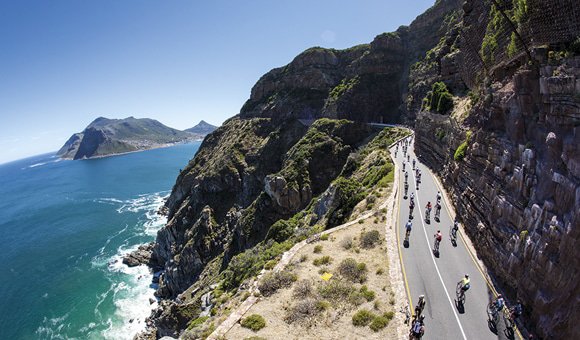Crush Your First Race In 7 Steps
You’ve been riding for a while and you’re itching to do your first race. This may seem as simple as pitching up, but you have two big questions to answer: Are you fit enough, and how exactly do you enter?
You’ve been riding for a while and you’re itching to do your first race. This may seem as simple as pitching up, but you have two big questions to answer: Are you fit enough, and how exactly do you enter? – By Andre Valentine
The whole racing shebang can be daunting if you don’t know what you’re doing. We spoke to Science to Sport Coach and Exercise Physiologist Ben Capostagno and Cape Town Cycle Tour Trust Director David Bellairs for advice on how to relish your first race.
Catch The Train
The best way to improve performance is through training. ‘A lighter bike will be easier to propel up the climbs, and a correct fuelling strategy will prevent you from running out of energy, but training is where the big changes lie,’ says Capostagno. Gradually progress your training load and don’t do anything too excessive – it will only put you off.
Less Isn’t Always More
An important consideration for novice cyclists is to increase the frequency of your training sessions, says Capostagno. ‘If you’ve only been riding two or three times a week, look at increasing that to four to five sessions. Two rest days will be more than sufficient to allow your body to recover.’ Remember, he adds, you don’t have to spend three hours or more training each day to improve. If you only have an hour to train during the week, you can still put together a constructive session.
Play The Race Card
According to Capostagno, new cyclists should look at participating in more events throughout the year. ‘You’ll gain race experience, which will improve skills such as riding in a bunch, feeding on the bike and improved pacing strategies. The “training” races need not be the same distance as your goal race. Shorter races can serve as a great training stimulus,’ he says.
Go All The Way
From a psychological perspective get some long rides under your belt – do the race distance. ‘It’s good to know what’s coming for you and where you’ll find the hills. Being familiar with the course will take the edge off,’ says Capostagno.
Get In Early
Events have limited entries so you can easily miss out if you’re not quick. ‘The best way is to enter online so, as soon as entries open, be online to enter,’ says Bellairs. ‘At the Cycle Tour you can create a personal profile on the website, so create this profile before entries open, then on the day they do, you’ve done half the job of entering already.’ While the Cycle Tour has its own entering system, most events use third party entry points, which also have a registration system that keep your information on file so entering is simplified.
Read The Manual
“I’ve seen too many first timers get lost and panic because they haven’t read the instructions,” says Bellairs. The instruction booklet holds important information about what to do, where to go and how to handle yourself at the start chutes. Bellairs suggests giving yourself an extra half hour or more to get to the start. “With traffic and large amounts of people at cycling events, things may not go as smoothly as you planned.”
A Clean Sweep
The biggest fear many first time racers have is they’ll get stuck on the route with a mechanical, unable to get back to the start. To set your mind at ease, check with organisers if they have sweeper vehicles and how they operate. ‘Most events should have sweeper vehicles, but it helps to make sure,’ says Bellairs. ‘At the Cycle Tour we have two sweeper vehicles: the mini sweep and the mega sweep. The mini sweep does a round of the route, picking up anyone who can’t finish and dropping them off at a water point, where the mega sweep picks them up and takes them back to the start.’
READ MORE ON: Skills training programmes


